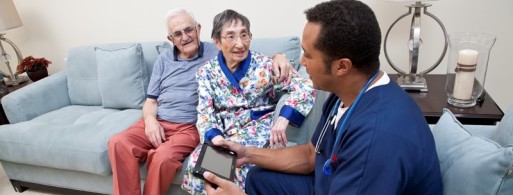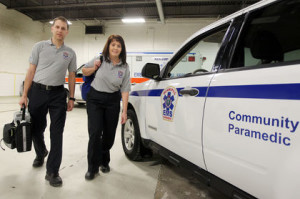
In-home hospice care is increasing patients’ quality of life and quality of death
(Credit: interimhealthcare.com)
A pilot program that started in Texas and has since spread to California is significantly reducing unnecessary hospital visits for patients enrolled in hospice. Ventura County’s 911 hospice program is one of several recent state-approved programs aimed at respecting hospice patients’ wishes regarding the care they do and do not wish to receive.
In an emergency, the patient’s wishes are often not known or taken into account by paramedics and emergency room staff when a well-meaning friend or family member calls 911 to address their loved one’s declining health symptoms. In an interview with 89.3 KPCC, Teri Helton, program manager at Livingston Memorial Visiting Nurses Association (a non-profit hospice organization in Ventura County) says, “The paramedics will take [patients] to the hospital in a rush and what ends up happening is they go through tests, they go through extra trauma in the hospital instead of being treated with the dignity and kindness they would in their home.”

Credit: pcmanetwork.com
These unpleasant ER trips are being mitigated by a communication system between hospice organizations and paramedics who are trained to recognize a hospice situation when called to a private residence. The paramedics contact hospice staff to receive direction regarding the patient’s wishes and to give comfort care as needed, as opposed to administering life-sustaining treatments.
Mike Taigman, general manager of American Medical Response, a company that provides the majority of ambulance and paramedic services in Ventura County, is responsible for introducing the 911 hospice program to California. He says that, so far, 14 paramedics in the United States have been trained directly by chaplains, hospice doctors, nurses and pharmacists to implement this program. According to data collected by Taigman, since the program was first implemented in Ventura County in August 2015, the number of hospice patients being transported to the ER as a result of a 911 call has dropped from 80 percent to 25 percent.
For more details on the 911 hospice or “paramedicine” program, check out this report from the University of California Davis Institute for Population Health Improvement.

 Pilot Program Allies Paramedics and Hospice to Reduce Traumatic ER Visits
Pilot Program Allies Paramedics and Hospice to Reduce Traumatic ER Visits



 The Healing Sound of Singing Bowls
The Healing Sound of Singing Bowls
 “Summons” by Aurora Levins Morales
“Summons” by Aurora Levins Morales














